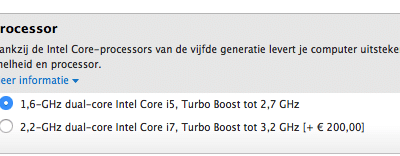Targeted live chat: how and what?
We’ve talked about proactive chat in our blog before. You know, when you contact your website visitors before they contact you. You can also take on proactive chat in a more focused way: targeting. Where you screen your website visitors in advance and only contact a small part of them, those who meet a number of requirements. That way you can communicate more effectively, which is useful if, for example, you use your live chat channel specifically for sales.
For those you do want to chat with, you can create a pre-set, and on the basis of those ‘requirements’, the software screens your website visitors automatically (proactive chat is completely automatic). You can screen your website visitors by, for example:
- visitors who have been to your website before (without buying anything),
- visitors who live in a certain area,
- visitors who are new to your website,
- visitors who have spent a certain amount of time on your website or specific page.
With this screening, you can automatically have a proactive chat message sent out to part of your website visitors. You may want to focus more on a certain group of visitors, such as those who leave a shopping basket without buying the products, or people in a particular city or cities. Or maybe you want to maintain the relationships that you have with your current customers, i.e. those who have previously purchased a product from you.
Triggers
For this purpose, certain ‘triggers’ can be set. Triggers are settings that specify the requirements (for example, that there has been an earlier visit or purchase). You can also immediately set up the action to be taken, such as, for example, the message that is sent to the customer via the live chat window, and how long this will take.
You can also indicate that the message can only be sent once, for example. Examples of triggers are repeat visit/first visit, chatted previously or not, purchase made or not. In addition, a number can be entered, for example that someone has been on your website three times before.
You can also focus on visitors who have already placed items in their shopping cart but have not yet settled on a purchase. For example, if they have the checkout page, with the items in their shopping basket, open for a certain period of time. Then you can give them that extra boost that they need to proceed with purchases. You can enter the URL to your shopping cart and the number of seconds that they have to be on that page at least before a proactive chat is sent out.
You can also set other pages as a trigger, for example, a comparison page where the functionalities and prices of different products are compared. Or maybe you want to bring attention to a specific product. Even then it is a good idea to provide the visitors who look at this product with more information about that product.
Focus on the right visitors
If you have chosen targeted live chat, it means that you want to do more with your proactive chat. Many also use it to increase their sales. A sensible approach to your targeted live chat is then to focus on visitors who have visited your website before, but who may not have bought anything yet.
With returning visitors, you know that they’ve been with you before, and the fact that they’ve come back tells you that they’re seriously interested in your products and/or services. And, if they’ve already bought something from you, this means that they’re satisfied as a customer. This is therefore where a relationship can be substantiated or built up.
Another way is to focus on those who are viewing your products but seem unable to make a decision. If you don’t take action, these visitors can easily switch to a competitor to make their purchase. You can prevent this by offering help to the customer at the right time.
Targeted live chat as an extra support tool
As you may have noticed, there are two ways to differentiate how you can use targeted live chat: to increase your sales (sales or lead generation), and purely as a customer service (build/maintain relationships). You can also use targeted live chat optimally to offer your website visitors extra service, to those who would seem most likely to use it.
To help solve questions before they arise and to help your clients make the right decision, it’s an asset to keep your customers happy, and to maintain or improve your relationship with them. It’s not necessarily meant to sell more products or services, but rather to provide customer service.
Targeted live chat as an additional sales tool
You can also use targeted live chat as an extra money maker – and that’s probably the best approach if you want to achieve immediate and visible results in the relatively short term. There is however something more involved here: an adapted strategy. Where you can set up targeted live chat for customer service so quickly and easily that you can, in short, approach every single customer that’s been looking around your website for more than 5 minutes. What you can get from this is a boost in sales and lead generation and a chance to look at how much research is going into a product. One thing is especially important: how to focus on the right customer.
Your website visitors also look around at your competition
There are some difficulties involved, such as how to get a good quantity of good quality leads. The problem is that many (new) website visitors do not immediately make purchases. They often first look around on other websites, which is also logical, especially with large purchases. Maybe they have the new version elsewhere, or the same product is slightly cheaper elsewhere.
After all, your visitors know full well how the internet works: it is fast, anonymous, and they have all the information right at hand. Just doing five more minutes of research can save a lot of money, so why not go back and forth between two different websites that offer (almost) the same products but then under different conditions? We’ve all done it, right?
Critical customers keep you focused
It is important that your customers do their own research, because it makes them more critical and that keeps you on top of your game. Critical customers therefore provide better products and better service. Because if your website visitor encounters even the smallest threshold, he or she will prefer to make their purchase elsewhere instead of contacting you. So if you make sure that all your processes run smoothly and quickly, the customer has nothing to complain about, and he or she will not so easily move to another provider.
The reasons that your website visitors eventually buy one of your products on another website can vary considerably. But talking to them before they reach this point can save you a lot, whatever the reason is as to why they are stuck somewhere in the process. You can talk to every website visitor, which, in principle, is fine if you only have 20 per day, but this isn’t the best approach in general.
Which visitors are really interested?
Not everyone has the intention of buying (immediately). Some of your visitors only want to view products, keep an eye on what is on the market or see what is said in reviews. You want to focus on the really interested people. So, first determine what you think is a really interested visitor and what his or her surfing behaviour is.
How long have they been on your website? Have they ever bought anything from you before? Have they already placed something in their shopping basket? Have they been on your website before? Which pages and how many pages has the visitor already viewed? If you sell very specific and high-priced items, you want to be stricter in the screening process than when it concerns more (small) impulse purchases. And if you sell B2B products, that’s a completely different story altogether.
Know when you can speak to your customer
The trickiest thing is probably to determine the best time for you to approach the customer. Because if the customer is browsing around nicely, you don’t want to disturb the flow or they may just leave without buying anything at all. So make sure that you are sure that the customer needs help. Look for someone who has been searching for a while and maybe has been stuck on a page for a few minutes.
An optimal strategy, study the surfing behaviour of your visitors
The best way to use targeted live chat will be different for you than for other companies so you have to analyse your own website visits carefully. View the abandoned shopping carts and the search behaviour of your visitors before they came to this point. Compare those with the behaviour of completed purchases and you are already well on your way. Focus on the average visit time and the duration of the page visits.
And don’t forget to see at which or what type of page your visitors get stuck. For example, a product page, or the page where they can complete a purchase, where they actually have to pay. If non-buyers spend more time on a certain type of page than the actual buyers, then this is a signal that you need to do something about this. You now know about when you can address someone. So set your targeted live chat settings to this when you are setting it up. And don’t forget to regularly check, analyse and adjust your strategy where necessary.
Are you already targeting your proactive chat? Or is targeted live chat completely new to you? A targeted approach in combination with a team that can also chat outside office hours can help you to convert more leads.

